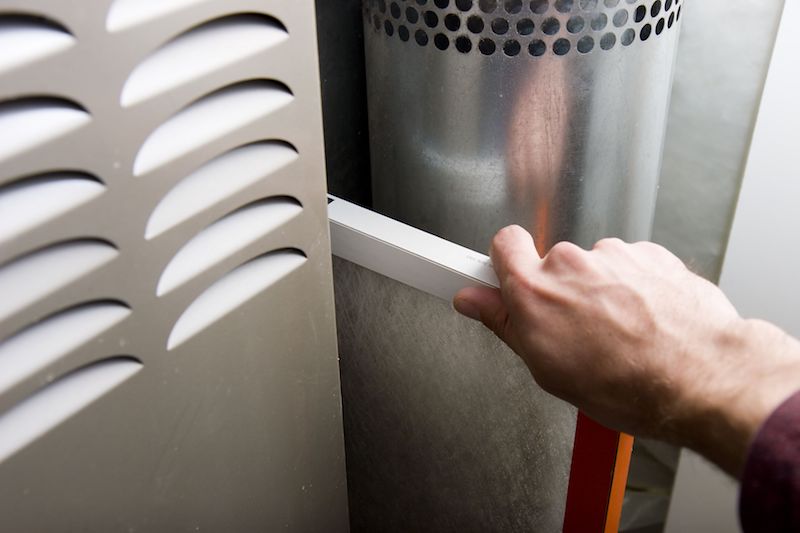
If you’re questioning whether your Chatsworth home has bad indoor air quality (IAQ), it likely does.
We are indoors a lot. As a matter of fact, we’re in a building up to 90% of the time, according to the U.S. Environmental Protection Agency. And the air inside houses could be 2–5 times worse than outdoors, which could create long-term health issues.
Most Common Sources of Unsatisfactory IAQ
We’ve put together a list of the most frequent sources of poor IAQ, the issues they make and how you can take care of these indoor air pollutants. If you’re worried about the air inside your residence, we suggest talking with a professional like True Temp Heating & Air Conditioning about which solutions are a good fit for your home.
Volatile Organic Compounds
Volatile organic compounds, or VOCs, are chemicals released by common household products.
They’re found in paint and stains along with:
- Furniture
- Carpet
- Building materials
- Cleaning products
- Cosmetics
- Air fresheners
- Candles
When these vapors accumulate in your home, they may irritate your eyes, nose and throat. They may also cause headaches and nausea. Regardless of whether your house is in a rural or industrial space, an EPA study found indoor levels of these pollutants can be 2–5 times higher than the air outside your home.
Always use the manufacturer’s directions when painting or cleaning. Opening a window can help chemicals disappear faster.
Air purification systems can also better your air. This equipment partners with your heating and cooling system to enhance indoor air. When seeking a system, ensure it’s specifically designed to eradicate VOCs.
Dust and Pet Dander
Dust and pet dander can irritate health problems like asthma and allergies, especially when it continuously gets redistributed by your home’s comfort equipment. While you can vacuum more routinely and buy an improved air filter, an air filtration system might be a better fit.
This unit hooks to your heating and cooling equipment to provide strong filtration. Some kinds provide hospital-level filtration for getting rid of particles and bioaerosols.
Persistent Odors
New residences are securely sealed to enhance energy efficiency. While this is good for your heating and cooling expenses, it’s not so good for your IAQ.
Musty odors can hang around for a greater amount of time as your house is pulling in reduced fresh air. As keeping your windows open all year-round isn’t doable, here are two methods you can make your indoor air smell cleaner.
An air purification system is installed in your ducts to eliminate odors before they get released again. Look for one with a carbon filter and the power to wipe out damaging VOCs. This equipment can also help keep your household healthy by eliminating most bacteria and normal allergy triggers like pollen and mold spores.
A ventilation system takes out stuffy indoor air and exchanges it with clean outdoor air. There are two models of units (heat recovery and energy recovery), so call our professionals for more info on which solution is best for your home.
Uneven Humidity
It’s essential your residence’s humidity remains even. Air that’s too humid can cause mold, while dry air can cause respiratory symptoms.
Our pros suggest 40–50% for ideal comfort. To keep yours even, consider getting a whole-home humidifier or whole-home dehumidifier with your comfort unit.
Instead of having to lug a humidifier from room to room, this product delivers consistent humidity throughout your house.
Carbon Monoxide
Carbon monoxide is colorless gas you can’t smell. It’s a byproduct of insufficient combustion in fuel-burning appliances, like gas heating systems, water heaters or fireplaces.
It produces a serious health risk. In little levels, it can lead to flu-like symptoms like headaches and nausea. It could be deadly in big levels.
We advise yearly furnace maintenance to make sure your system is working properly. This service allows our techs to pinpoint issues before they begin, including malfunctions that can create carbon monoxide leaks.
The best approach to keep your residence free of carbon monoxide is to install detectors. These alarms need to be on each floor close to bedrooms and living rooms.
Better Your Home’s Air Quality with the True Temp Heating & Air Conditioning Professionals
Informed that your home has poor air quality but not sure how to enhance it? Or unsure which option is right for you? Give our friendly HVAC pros a call at 706-695-7492 or contact us online today. With free estimates and expert assistance, we’ll help you find the right equipment for your needs and budget.
